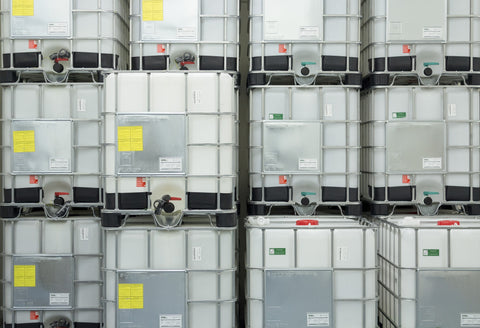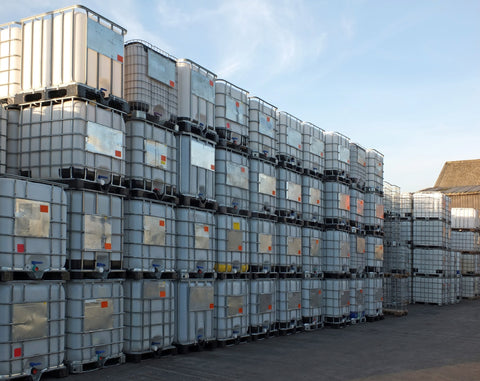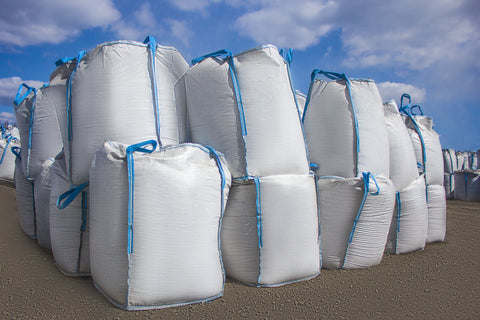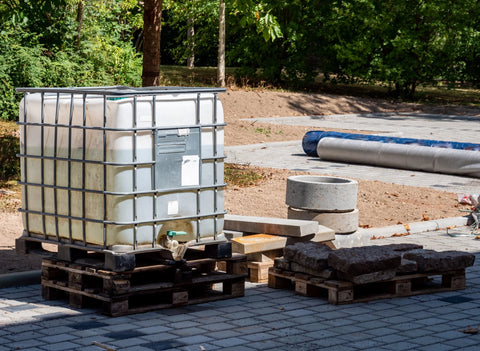Navigating the Chills: Epoxy Resin in Cold Weather
Introducing the challenge of working with epoxy in cold weather conditions can be quite daunting. As professionals in the epoxy industry, we often find ourselves facing dilemmas when colder temperatures influence the curing process of epoxy resin. The versatility and resilience of epoxy, even in adverse conditions, make it a preferred choice for numerous applications. In this article, we will delve into the intricacies of cold-weather epoxy pouring and curing, shedding light on how a low temperature can affect epoxy and sharing valuable insights and cold-weather tips. Our goal is to equip you with the knowledge necessary to ensure that your epoxy projects cure properly, maintaining their structural integrity even in the chilliest of environments.
Understanding Epoxy Resin
Will epoxy crack in cold weather?
Epoxy's susceptibility to cracking in cold weather largely depends on various factors, including the specific epoxy formulation used, its application, and the severity of the cold conditions. While epoxy is known for its resilience, extremely low temperatures can pose challenges. In milder cold weather, properly formulated and applied epoxy is generally quite resistant to cracking.
However, in extremely cold conditions, where the epoxy experiences rapid temperature fluctuations or extreme cold without proper curing measures, there is a risk of cracking. To mitigate this risk, it's crucial to follow best practices for working with epoxy in colder conditions, such as adjusting mixing ratios, maintaining proper curing temperatures with external heating elements, and using additives when necessary. By adhering to these guidelines and understanding the characteristics of epoxy that can cure in colder temperatures, professionals can significantly reduce the likelihood of epoxy cracking and ensure the longevity of their epoxy projects, even in chilly environments.

Key characteristics of epoxy resin in low temperatures
When epoxy resin encounters cooler temperatures, it undergoes transformations that demand our attention. In cold temperatures, this typically fluid substance may thicken, crystallize, or, in severe cases, freeze. Understanding how these cold temperatures impact epoxy resin and the subsequent curing process is pivotal for achieving successful epoxy applications in less-than-ideal conditions.
There are products on the market that are specially formulated to cure more easily in cold temperatures, often referred to as "cold-cure". While cold-cure epoxy is a popular option when doing smaller-scale projects, this product does not fit the needs of many larger-scale projects. Many industries use large totes to store their epoxy during many stages of their manufacturing or flooring processes which makes cold-cure an unrealistic option for curing success.
The Impact of Temperature Drops on Epoxy Curing
The challenges posed by cold weather can be substantial, and they ripple through the entire epoxy-curing process. In the following sections, we'll explore how temperature fluctuations affect epoxy curing time and the overall quality of the cured epoxy. Understanding these dynamics is key to mastering the art of epoxy applications in colder climates.
The Chemical Reaction: A Crucial Factor
Epoxy curing hinges on a fundamental chemical reaction between resin and hardener. Temperature is a pivotal factor in this equation. In the realm of epoxy in cooler temperatures, this chemical reaction can undergo a significant slowdown. The frigid environment can impede the molecules' mobility, resulting in longer cure times and potential issues with the final epoxy product. Understanding how temperature affects this chemical interplay is paramount for professionals seeking to navigate the complexities of applying epoxy coating in cold temperatures. The degree of control over this reaction can be the difference between a resilient epoxy bond and a lackluster outcome.
Overcoming Challenges with Amine Blush
One of the most common adversaries faced in the realm of epoxy applications is the formation of an amine blush on the cured surface. This waxy film can be particularly vexing, but understanding how to prevent and address it is essential for ensuring a proper cure. Left unchecked, amine blush can compromise the bond's strength and aesthetics. Our exploration into the strategies for using epoxy coatings in lower temperatures will include effective ways to combat this persistent challenge, empowering epoxy professionals to create resilient and flawless finishes, even when the temperature dips.
Strategies for Successful Epoxy Coating Applications
Examples of some industries whose success hinges on the mastery of specific strategies and techniques for successful curing are; Industrial Coatings Manufacturers, Epoxy Flooring Manufacturers, and Epoxy Flooring Specialists. Let's dive deeper into these strategies to equip professionals with the knowledge and tools they need to conquer the cold.
Proper Storage and Handling
Storing epoxy resin in low temps requires precise attention. The mission is twofold: prevent resin freezes and maintain the epoxy within a specified temperature range. Consider the application of electric heating pads or jackets around the totes or storage containers as your secret weapon, ensuring that the epoxy remains at the ideal pourable temperature even in the chilliest of environments.
Adjusting Mixing Ratios
Cold temperatures demand an adjustment to the mix ratio of epoxy resin and hardener to safeguard the intended chemical reaction. This adjustment often involves introducing more hardeners than usual to compensate for the lower ambient temperature. By mastering this aspect, professionals can tip the balance in favor of a successful epoxy application, even when the cold weather threatens to tip the scales.
Adjusting the temperature of the resin and hardener before you begin to mix resin allows you to achieve a more successfully mixed epoxy that will in turn lead to an unmatched proper cure. Using external heating elements along each step of the process, like preheating your resin and hardener with a heating jacket for your tote, can cut down on cure time and give you more temperature control than you would get with a space heater or heat lamps.
Monitoring Curing Conditions
Real-time temperature monitoring during the process of curing is not a luxury but a necessity in epoxy applications in cold weather. Utilize temperature data loggers to maintain strict control over the curing conditions and ensure that the epoxy remains within the prescribed temperature range. Timely adjustments based on monitoring data can be the safeguard that maintains the bond's integrity.
Using an electric heating pad or heated curing blanket during the final curing can prevent air bubbles, cut down on your cure time, and avoid uneven coats, as each layer has the proper curing parameters regardless of the weather.
Case Studies: Epoxy in Manufacturing and Flooring
Our journey into the world of epoxy in colder temperatures will culminate in the exploration of real-world case studies. These cases will provide concrete examples of how professionals in various industries, including industrial coatings and flooring, have harnessed the power of external heating elements to overcome challenges and achieve outstanding results. These stories highlight the innovative solutions implemented by professionals determined to conquer the cold.
Case Study 1: Epoxy Flooring Manufacturer's Tote Heater Solution
In the realm of epoxy flooring, where temperature control is paramount, our first case study brings to light the ingenious use of heating elements for totes by a dedicated manufacturer. Faced with the challenge of ensuring that epoxy resin maintains the optimal pourable temperature in colder environments, this professional turned to external heating elements. By wrapping the heated pad around the epoxy storage containers, they achieved precise temperature control. This innovative solution allowed them to consistently heat the epoxy resin to the desired temperature before pouring, regardless of the external cold. The result? Flawless epoxy flooring installations are free from the complications that cold weather can introduce. This case underscores the effectiveness of external heating elements like tote heaters in maintaining epoxy's workability and the impeccable quality of the final product.
Case Study 2: Industrial Coatings Manufacturer's Tote Heater Success Story
In the realm of industrial coatings manufacturing, where precision and reliability are non-negotiable, our second case study showcases the remarkable application of tote heating solutions. An industrial coatings manufacturer faced the daunting task of ensuring that epoxy resin remained at the right temperature throughout their production process, even in cold conditions. Their solution was to integrate heaters into their manufacturing workflow. By strategically placing these external heating elements, they maintained a consistent temperature for the epoxy resin, ensuring it remained in its ideal state for application. This innovative approach not only improved the efficiency of their production process but also elevated the quality of their coatings. The case of this manufacturer highlights how external heating elements can be a game-changer in industries where epoxy's performance is critical, even when confronted with the challenges of cold weather.
Embrace the Cold: Mastering Epoxy Applications in Low Temperatures
In conclusion, the art of working with epoxy in cold -weather is a journey worth embarking upon. The key lies in embracing the cold, understanding its intricacies, and mastering the techniques that enable success. Temperature remains an ever-present player in the curing time and quality of epoxy, but with the insights, strategies, and techniques outlined in this article, professionals can confidently create resilient and durable epoxy bonds even in the face of chilly conditions. As we conclude our exploration of finding success with epoxy, regardless of the forecast, remember that the cold need not be a hindrance; it can be a canvas for your expertise to shine.







